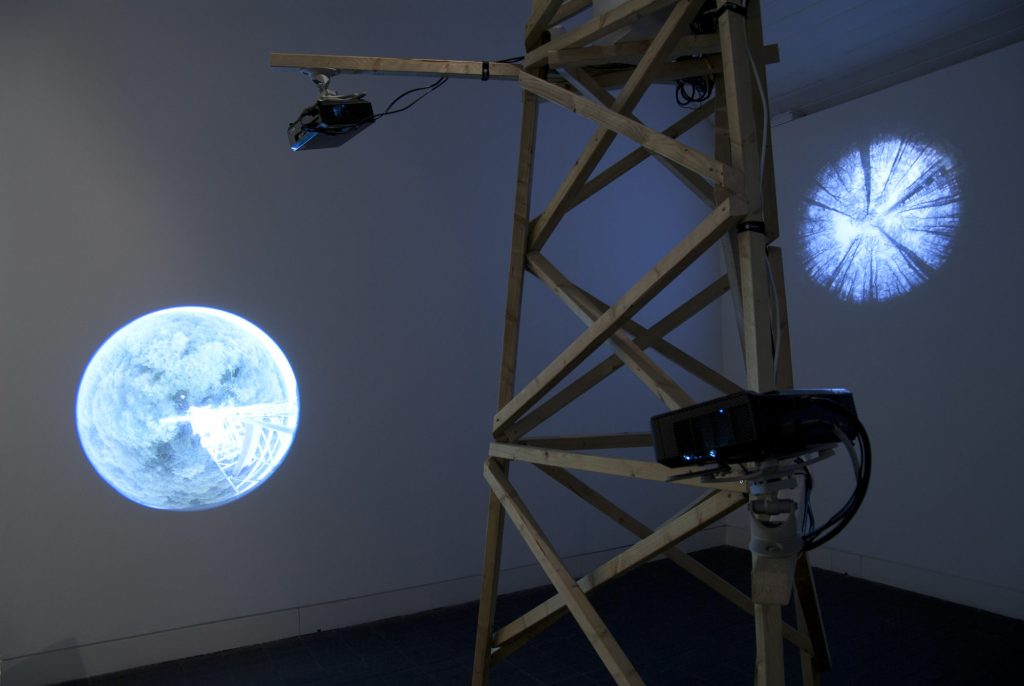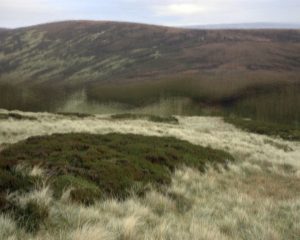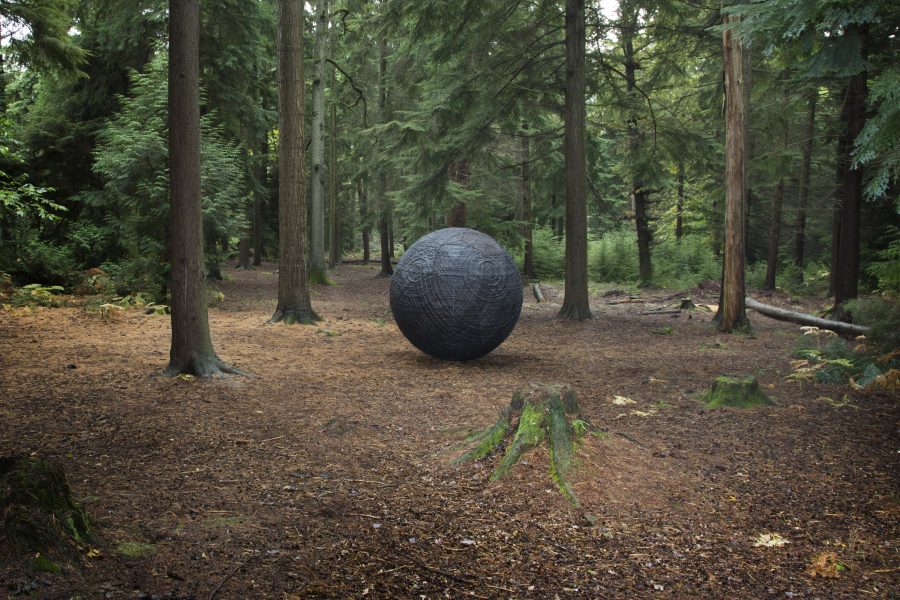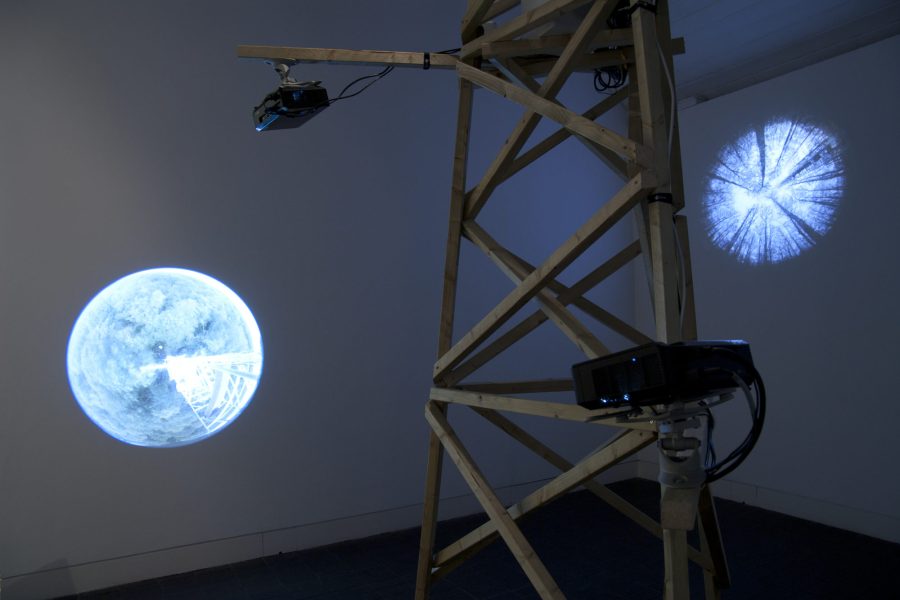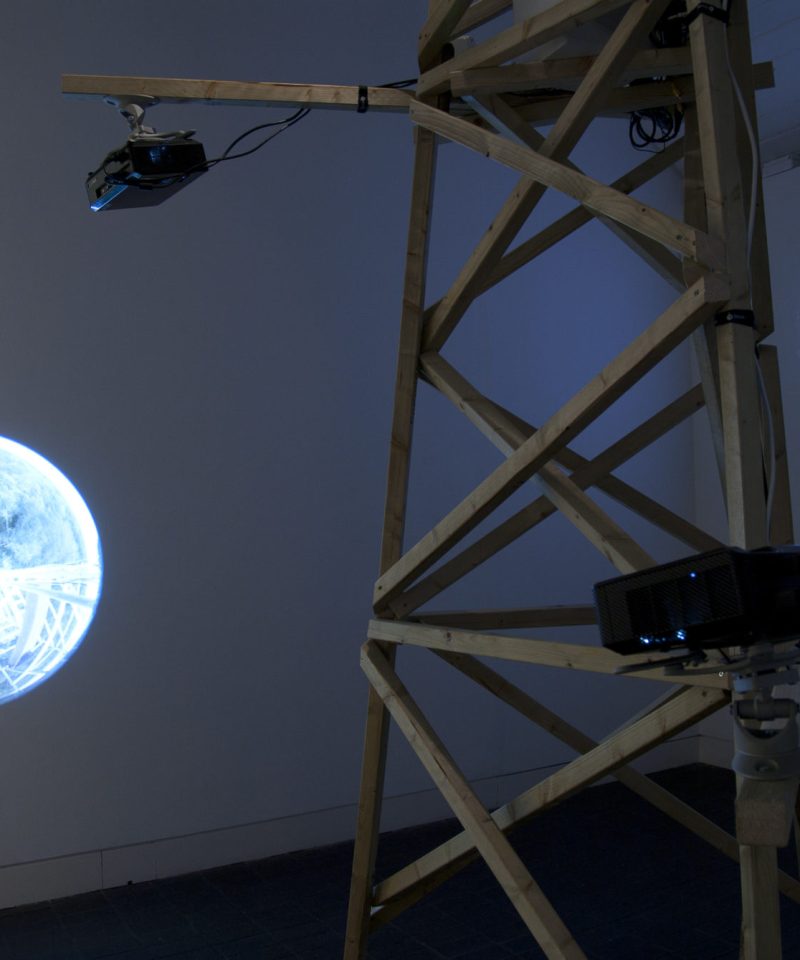On Wednesday 22nd of January I took a trip to Brighton to visit Semiconductor. Amidst sheets of data drawings pinned to the walls, computer screens, stacks of carbonised paper, bicycles and digital etching equipment, we talked about their proposal for the Jerwood Open Forest, which was exhibited throughout January and February 2014 at Jerwood Visual Arts, London. For more films, photographs and writing, visit their website.
What is your proposal for the Jerwood Open Forest commission, and how does it relate to the tower that is currently standing in the gallery?
We want to make a wooden sculpture – a two-metre sphere – created and shaped using data compiled from four different instruments from the flux tower at the Alice Holt Research station, in the South Downs National Park. We’d like to take the data and create something tangible with it. The sphere will be composed of triangular wooden tiles, and each one of them is inscribed with a different piece of data. Our installation at the Open Forest exhibition is a recreation of the flux tower, with video playing from the tower’s two cameras – one on the floor of the forest looking up, and one at the canopy looking down. The scientists use these to monitor leaf change, colouration, and mutation.
And what is the data evidence of?
The forest is actually ‘experimental’ – they are growing oak trees specifically for research purposes, which is a wonderfully romantic idea. The data we’re using is from the flux tower, which examines how much carbon the trees collect and sink into the ground. Climate science is always looking at this process – how carbon is taken out of the atmosphere and transferred. It also collects information on temperature, water and wind direction because forests actually create their own climates and wind systems. They’re called ‘eddies’, which is the flux.
At the beginning of your practice, you were both creating large-scale sculptural works. Does this proposal feel like a return for you both?
After we left college, we didn’t have any space to keep making our large installations. That time coincided with the first generation of domestic computers, so we started looking at those, to see what languages we could develop through working with them. We soon started working with basic, very early 3D software, which suddenly offered us infinite space. That became our studio, and our new sculptural practice. Our earliest digital moving-image pieces were on an architectural, landscape scale. Now, we’re keen to re-introduce a materiality into our work. We want to feel things, although we’ve always played with the relationship between analogue and digital.
A theme which is prominent in your work since the early 2000s is translation, or conversion: taking one set of data and inscribing it into a different form, or making an image a sound, or a sound into an image.
The term ‘translation’ makes you think that it’s changing from one language to another, but it isn’t always like that. Scientific data becomes abstracted, and we are trying to feel the data. We’re trying to find a language through which to experience the data, through sensation. A kind of sublime.
In our early ‘process works’, we were literally translating sound into images. One piece was called A to Z of Noise (1999). We were using the computer as a third element in our group, which is why we called ourselves Semiconductor. We wanted to make the computer do things which were noisy and messy, to humanise it. In A to Z of Noise we used noise reduction, both for images and sounds. It’s supposed to clean it up, but we applied it to pure noise. We did the same thing to black leader, applying the reduction over and over again.
WATCH: A to Z of Noise (1999)
It feels like there’s a certain romanticism in your works. A lot of it is about making us, as bodies, more sensitive to landscapes – whether digital, material or informational.
It’s a kind of ‘technological sublime’ we realised. So many people presume science is fact, but a lot of the time it’s fiction. We don’t know, but they (the scientists) also don’t know. It’s an unfinished process. Ongoing. We’re interested in creating fluidity between languages and tools. Things don’t need to be so rigid and structured. We are playing with the philosophies of science. There’s so much data being produced all the time, and people assume it isn’t interesting just because it’s immense, and everywhere. But you can release it, or present it in a way that it becomes accessible, and experiential.
In our early work we were quite dystopian – we were dealing with things like earthquakes and climate change. But now we’ve found subtler ways to encourage people to reflect. A good example is the solar wind: it is deadly, and it can kill us (and it’s the reason we still can’t go to Mars), but it’s also awe-inspiring.
WATCH: Black Rain (2009)
‘Time-based media’ is a term which is increasingly used to refer to cinema and moving-image, and in many of your pieces, ‘time-based’ could refer to geological time, as well as cinematic time and digital time. Playing with time is a key way in which you re-situate your viewer into a greater schema, or system.
That’s one of the reasons we work with moving image. As soon as you play with time, in any medium, it becomes animated. With video you can get really plastic with time. Equally, as soon as you start working with sound, which we very often do, you immediately have something moving in time. You can’t have a ‘still’ of sound. There’s a piece we made called All The Time in the World where we took seismic data and reanimated the landscape it derived from. We used photographs, and then applied different processes to make them seem three-dimensional, and used the sound waves from the seismic data to animate the photographs. It was stripping things right back to the basics of filmmaking, in some ways.
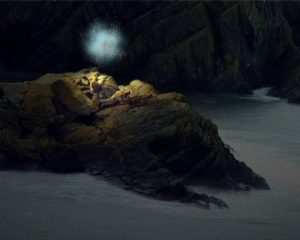
How do you see the world in which your works live in? You operate in many spaces, not exclusively the gallery.
We found platforms abroad, often at multimedia festivals where we seemed to share a language with other artists. When we were working exclusively with digital technology, the UK scene seemed to be a bit behind. Then we started putting our work online, from early on, and in that sense we were creating our own audiences. We started our own clubs, and invited musicians and other artists to do short performances. We released our work on DVD around 2001; and as far as we know, we were the first artists to self-release in that way. More recently we’ve returned to the gallery space, because it’s where our language comes from.
